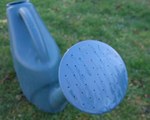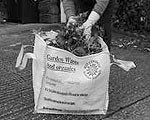 Go to main content
Go to main content
Archive Website of the UK government
Please note that this website has a UK government accesskeys system.
Main menu
Page menu
Environment and greener living

Greener gardening: a quick guide

As a gardener, there are many ways you can help the environment. Simple steps you can take include encouraging wildlife into your garden, getting a water butt, making your own compost or using peat-free compost.
1. Use pesticides and weedkillers as a last resort
Some garden chemicals can harm people, wildlife and the environment. Only use them as a last resort, and work with nature to control pests and weeds instead.
2. Ditch the peat
Help protect environmentally precious peat bogs by choosing peat-free or peat-reduced mulches and soil improvers. These can be just as good or better than peat. It’s important to check the instructions on the bag, as they sometimes need handling differently.
Peat-free and peat-reduced products are widely available at high street stores and garden centres. Check that the bag says ‘peat-free’ or ‘peat reduced’ or ask an assistant.
3. Use water wisely
Get a water butt
Thousands of litres of water fall on the average rooftop every year. You can easily save on mains water by collecting some of this to use on your garden. Water companies and local councils often sell water butts at subsidised prices.
Recycle your water
Water that has been used in the home, except water from toilets, is called greywater and can be reused in the garden. For more on how to use greywater, see 'Water: using less in the garden'.
4. Compost garden and kitchen waste

A third of people in the UK who have a garden say they compost
Start a compost heap or get a compost bin and put your kitchen and garden waste to good use in your garden. Ask your local council if subsidised compost bins are available in your area.
Many councils also provide facilities at recycling centres for larger amounts of garden waste which are recycled and turned into compost.
5. Welcome wildlife
Encourage insects, hedgehogs and other wild animals by creating a range of places for them to live and providing sources of food. Flowering plants that offer nectar and pollen will attract bees, butterflies and other insects. Trees and shrubs that produce berries will help feed birds.
6. Think before paving over your garden
Paving over gardens contributes to flooding, which can sometimes cause sewage and pollutants (like pesticides) to be washed into local waterways.
If you need to create space for parking outside your house, consider using materials that absorb rainwater or let it drain through. For more details, see the ‘Paving over gardens’ paragraph in ‘Preparing for climate change’.
7. Choose your wood carefully
Look for labels on timber, or wood products like sheds, that show they have been produced in an environmentally friendly way. Common labelling schemes include the Forest Stewardship Council (FSC) or Programme for the Endorsement of Forest Certification Schemes (PEFC).
8. Reclaim and recycle
Give old timber, metal and plastic a new lease of life by buying decking, planters and garden ornaments made out of reclaimed materials. Use your imagination to turn old containers of all kinds into unusual plant pots and containers for growing fruit and vegetables.
9. Choose your charcoal carefully
Make sure the charcoal you use on your barbecue comes from forests that are sustainably managed so they will be around for years to come. Look for labels from the Forest Stewardship Council (FSC), Programme for the Endorsement of Forest Certification (PEFC), or other forest certification schemes.
10. Grow your own
Growing just a little bit of your own produce can help reduce the environmental costs of packaging and transporting food.
Useful contacts
In this section...
- Composting
- Water: using less in the garden
- Encouraging wildlife in your garden
- Choosing peat-free soils and fertilisers
- Grow your own fruit and vegetables
- Controlling pests and weeds: greener choices
- Barbecues and outdoor heaters: greener choices
- Sheds, greenhouses and garden furniture: greener choices
 Facebook
Facebook Twitter
Twitter StumbleUpon
StumbleUpon Delicious
Delicious Reddit
Reddit
